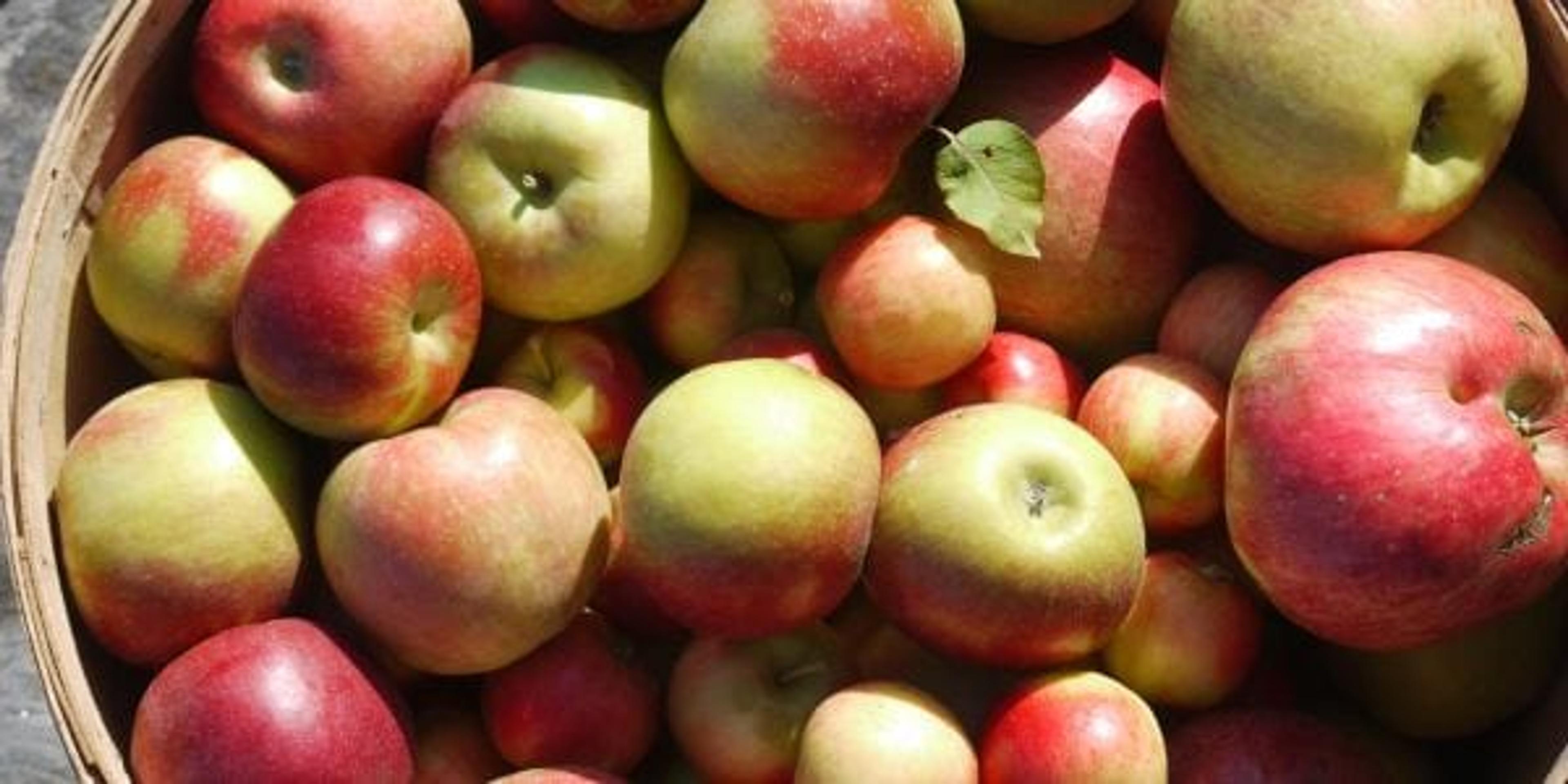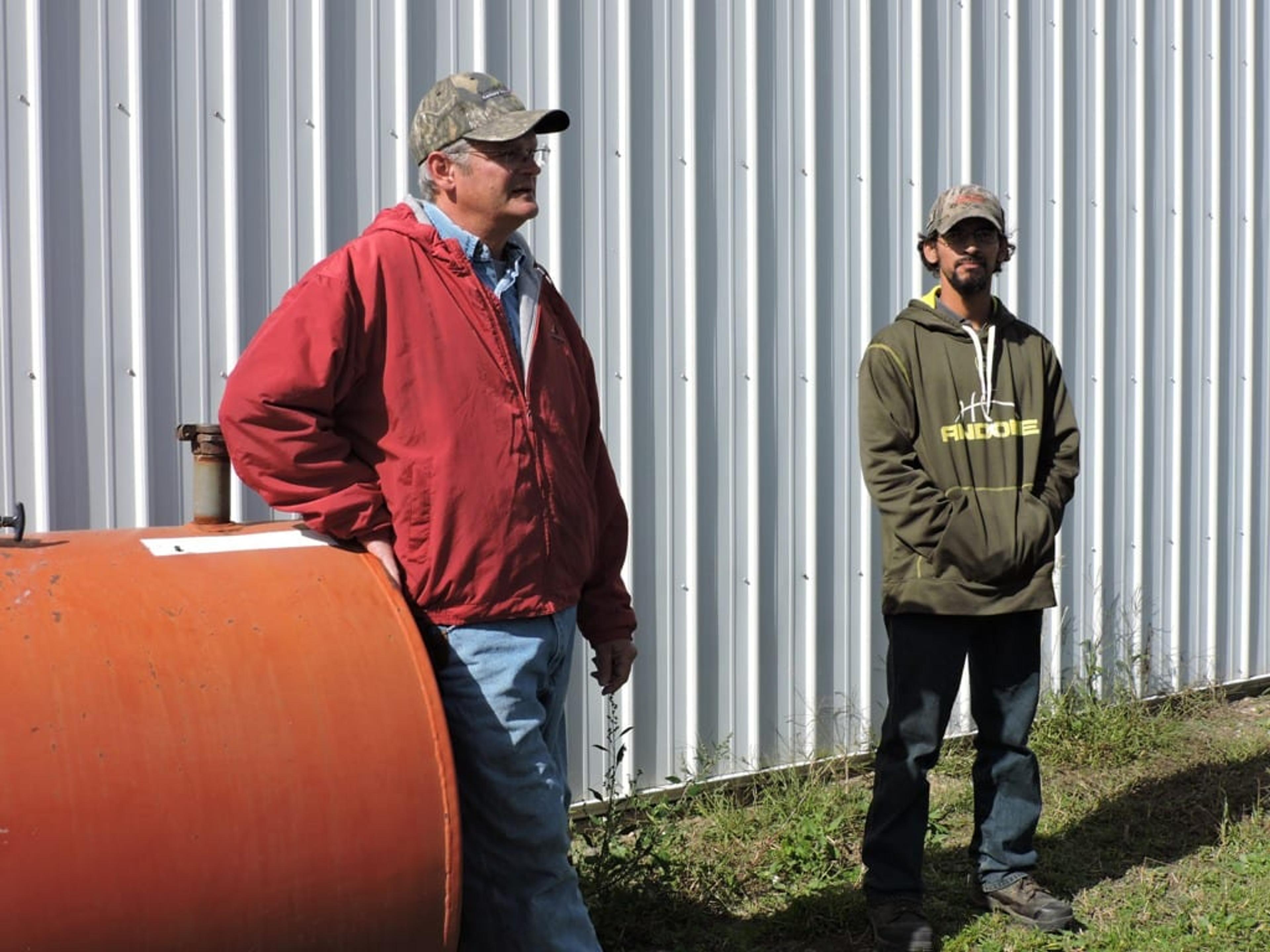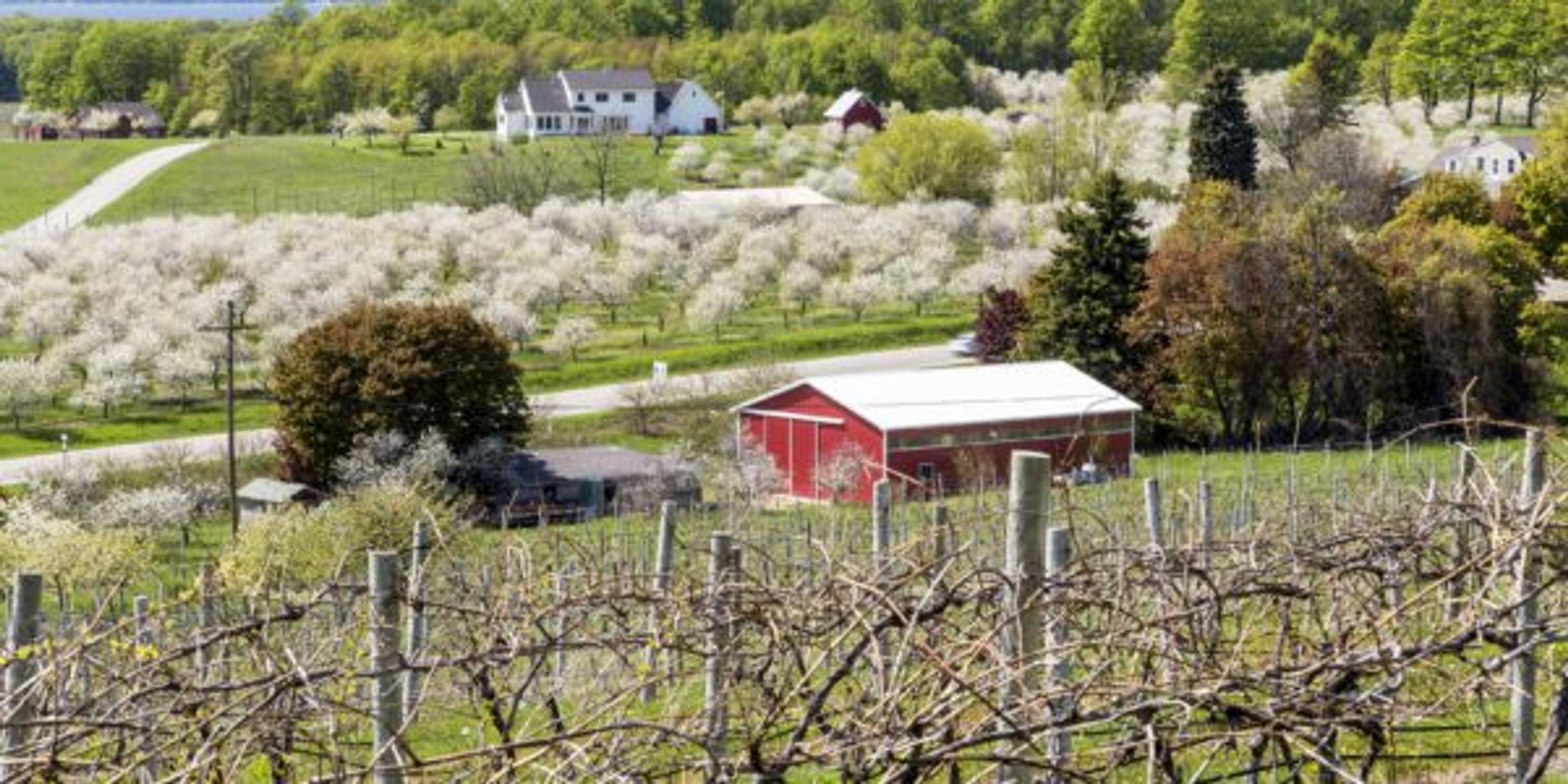On the Apple Trail: Farming Michigan’s Abundant Orchards

Julie Bitely
| 5 min read

A recent visit to two family-owned apple orchards, as part of a Michigan apple blogger tour, revealed a great deal about farming methods and challenges in the state.
With different growing methods and philosophies, both farms provided unique insights into the industry, including pest management, labor, and ideal growing conditions.
Although apples are grown in most parts of Michigan’s Lower Peninsula, 70 percent of production happens in the Fruit Ridge, a growing region that’s about eight miles wide and 20 miles long, covering 158-square-miles of land, centered near Sparta, Michigan.

Mark Youngquist and his son Jordan.
Mark Youngquist runs Youngquist Farms in Kent City, Michigan, with his son, Jordan Youngquist. Located in the heart of the Fruit Ridge, their 180-acre farm is situated at about an 850-foot elevation, just 30 miles from Lake Michigan. Youngquist said the high elevation allows air movement and helps protect the trees from frost and fungus.
“Elevation is everything,” he said.
The farm relies on seasonal laborers to harvest their crop. For the first time this season, they connected with workers from Vera Cruz, Mexico through the federal government’s H-2A program, which allows U.S. employers to bring foreign nationals to the United States to fill temporary agricultural jobs. Mark Youngquist said he liked the program because it ensured laborers are able to return home to their families once the seven-week harvest is complete.
“The day the last apple is picked, we don’t need any more help,” he explained. “They’re here to work and then they go back home.”

A worker harvests apples at Youngquist Farms.
Picking apples is hard work and it’s all done by hand. Workers carry a large bag on their shoulder that can hold upwards of 60 pounds of apples and they’re moving up and down an 18-foot ladder all day long. Youngquist said there’s a real art to picking apples. If the stem is missing, it’s like an injury to the fruit and could even damage next year’s crop, making qualified labor extremely important. Apples must be handled with care to avoid bruising, which makes them harder to market to picky consumers who want unblemished fruit.
“There’s a real skill to it,” he said. “We can’t do it without really good people. They depend on us and we depend on them.”
Youngquist provides housing for workers and pays a minimum wage of $11.49 per hour or $16 per crate of apples picked, whichever comes first.
Many of the trees on Youngquist Farms are planted using a high-density trellis system, with 1,000 trees per acre. Youngquist said his grandfather would have only planted about 30 trees per acre. Planting so closely together allows farmers to get trees to produce more high-quality fruit faster. However, it also raises the risk for disease to spread faster as well.
Julianna Wilson is a Tree Fruit Integrated Pest Management Specialist from Michigan State University. She said most farms rely on a variety of methods to manage pests and disease. Traps are used to attract insects and can also be used to catch fungal spores from the air. Constant monitoring of weather patterns and activity from the traps can help farmers be in a better position to predict what types of things they should be on the lookout for in any given year.

“We’re always developing new tools and techniques,” she said.
Wilson said organic apples are hard to grow because they’re so attractive to pests and prone to disease. She pointed out that even if an apple is marketed and grown organically, it’s likely that pesticides were still used; they’re just made from naturally-derived sources. Because the natural pesticides aren’t as effective, they need to be applied more frequently, which could actually cause greater environmental impact due to more gas being needed to run the tractor more frequently.
At Sietsema Orchards & Cider Mill, 4th-generation farmer Andy Sietsema said his family-run apple orchard, take a smaller approach to growing apples. Changes in the habits of apple-buying consumers led to the planting of more heirloom apple varieties in smaller plantings and yields.
He said people are no longer purchasing bushels of apples to make applesauce and pies. Instead, they’re buying the pies and applesauce at the grocery store. In response, the farm has really evolved into a place to educate consumers and the general public about apples. The orchard hosts special events and invites people to stop by the operation to sample and buy hard and regular cider and walk through the trees.

Apples ready to go from Sietsema Orchards.
About 150 varieties of apples are grown on the farm, including Spitzenberg, thought to be Thomas Jefferson’s favorite variety, Harrisons, and Golden Russets. A lot of the heirloom apples are used in the farm’s hard cider operation. Sietsema said staying small allows the farm to be more innovative and respond to the marketplace while keeping a low overhead.
“We want to stay small,” Sietsema said.
Diane Smith is the Executive Director of the Michigan Apple Committee, which sponsored the blogger tour. She said the Sietsema and Youngquist families aren’t unusual in their commitment to keep their farms in the family. She said most apple orchards in Michigan aren’t large-scale commercial operations.
“These are family-owned farms,” she said.
This is the second of four posts that will cover the apple tour. Read the intro post and check back in for two more posts about apple production and tourism.
Check out these posts for more on Michigan apples:
Photo credit: Rebecca Siegel





